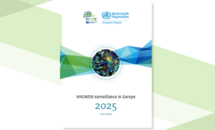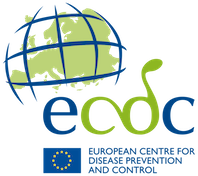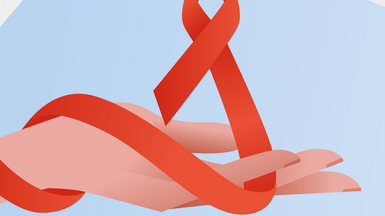HIV/AIDS Surveillance in Europe 2025 – 2024 data
This report presents HIV/AIDS surveillance data for 2024, which shows significant variation in epidemic patterns and trends across the World Health Organization (WHO) European Region. In 2024, 105 922 HIV diagnoses were reported in 49 of the 53 countries in the Region, including 24 164 from the countries of the European Union/European Economic Area (EU/EEA). This corresponds to a crude rate of 11.8 HIV diagnoses per 100 000 population overall, a slight (7.8%) decrease compared with the 2023 rate (12.8 per 100 000 population). However, 11 out of 49 countries still reported an increase in HIV diagnoses in 2024 compared to 2023.
Download

For the EU/EEA countries, the rate in 2024 was 5.3 per 100 000, marking a 14.5% decrease from the 6.2 per 100 000 rate observed in 2015.
When comparing the number of HIV diagnoses made to the estimated number of new HIV infections acquired over the past decade, it is evident that an increasingly larger number of people are living with undiagnosed HIV in the Region. In the EU/EEA, the trend differs from that for the wider Region, with slightly more diagnoses reported than the number of new infections estimated.
Continuing a trend that has persisted over the last two decades, rates and overall numbers of people diagnosed with HIV were highest in the East of the Region (27.2 per 100 000 population), lower in the West and the EU/EEA (5.9 and 5.3 per 100 000, respectively) and in the Centre (5.3 per 100 000). The rate of diagnoses in the Region was higher among men than women in all age groups.
The mode of transmission varies across subregions, highlighting the diversity in HIV epidemiology across the Region. Overall, most HIV diagnoses in the European
Region are attributed to heterosexual transmission (70.3% of all people with known mode of transmission). Heterosexual transmission is still the main mode of
transmission in the east of the Region and has even been increasing over the years. Similarly, in the EU/EEA, and the West and Centre of the Region, heterosexual transmission has remained one of the most prevalent modes of transmission reported in 2024, particularly among migrants or those with a previous positive diagnosis. Among those reporting heterosexual transmission in the West, 31% had been previously diagnosed, and 73% were migrants born abroad. Sex between men is still the most prevalent mode of transmission in EU/EEA countries, accounting for 48% of reported diagnoses with known transmission mode. Sex between men was also a predominant transmission mode for eight of the fifteen countries in the Centre. The proportion of injecting drug use as a reported mode of transmission continues to decline, with around one in five (18%) of HIV diagnoses with known mode of transmission in the East being due to injecting drug use.







